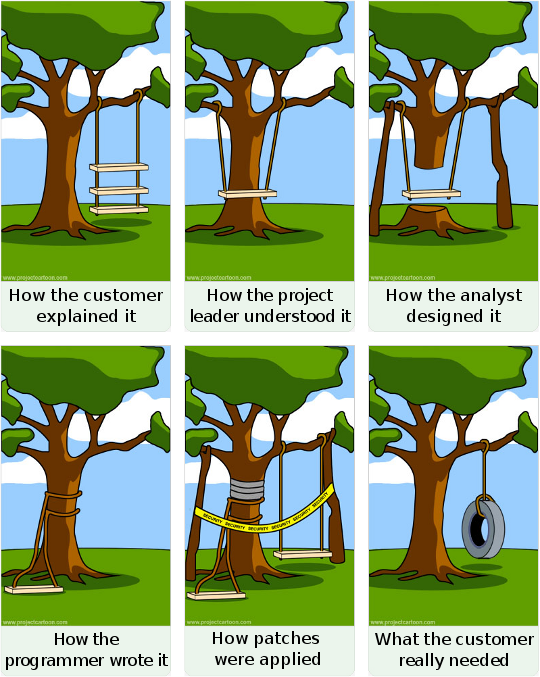CSC/ECE 517 Fall 2009/wiki3 7 Agile: Difference between revisions
| Line 46: | Line 46: | ||
[[Image:software_lyfCycle.png|650px|thumb|center| | [[Image:software_lyfCycle.png|650px|thumb|center| Software development cycle.]] | ||
====Waterfall model==== | ====Waterfall model==== | ||
Revision as of 04:58, 18 November 2009
Similar to the design pattern which give structure and name to commonly occuring problem, Software development methodology or system development methodology is a frame work which is used to structure, plan, and control the process of developing an information system.
Development methodologies
Introduction
Software Development Methodology (SDM) or Software Development Life Cycle (SDLC) is documented collection of policies, processes and procedures used to conduct a Software Engineering project. Software Engineering project involves various stages viz. analysis, design, developement, testing, documentation, implementation and evaluation.
The art of Software Development requires a clear understanding of the project or business goals by both the customer commissioning the project and the technical team. It is the software devlopers role to then communicate with the project sponsor and translate a business concept into a working software system in a timely and effective manner.
The use of systematic processes for the development of software reduces the risk that is inherent in any software project. These processes must be put in place in a careful manner to allow technical team members to solve problems in a creative and skillful manner.
Software Development Methodolgies involve following four key steps
1. Requirements This is the phase where the Business Analyst or Project Manager works with the Customer to understand the project goals and translate this into a desired set of functional objectives.
2. Design In this phase a solution is mapped out with 'pen and paper'. The solution describes how the final software will operate and includes other practical components including the technologies to be used, hardware requirements, impact on other information systems and the time and resources required to implement the software.
3. Implementation This is the time where the agreed project plans are coded into a practical working system.
4. Testing Testing is performed on discrete units of the computer system as well as the solution as a whole. A tracibility matrix can be used to ensure that each functional objective set in the requirements phase has been solved.
A wide variety of Software Development Methodolgies have evolved over the years.Each have its own recognized strengths and weaknesses. One system development methodology is not necessarily suitable for use by all projects. Each of the available methodologies is best suited to specific kinds of projects, based on various technical, organizational, project and team considerations.
Few of them are listed below.
1. Agile software development. 2. Waterfall model. 3. Spiral model. 4. Test-driven development (TDD). 5. Design-driven development (D3).
General Problems faced during software development
Software development process goes through the phases of Requirements, Design, Development, Testing & Maintenance one after the other. It relies on the dream that once a step is 100% complete, it is also 100% right and it drives us to the delivery of a working software even the one the customer wants. But it doesn’t go that way in the software industry: customers don’t know what they need and use to ask many useless features, project leaders don’t succeed to write down the perfect requirements, analysts spend ages building up software architectures writing down pages of diagrams – software is definitely one of the most complex artifact humans can build up – and developers are human too, so they make mistakes too. It is often very hard to create exactly what the customer wants in software development. With large software companies, the real ‘requirements’ can get mangled on so many levels. The below picture depicts it all:

Waterfall model
Prototyping
Incremental
Spiral
Rapid Application Development (RAD)
Agile
How can Agile complement other development methodologies
Agile Vs waterFall
Conclusion
References
[1]